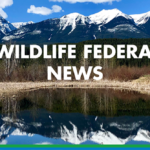Kettle River drops lower on endangered rivers list
The Kettle River remains high on B.C.’s endangered rivers list at number four as a remote wilderness landscape widely known as “the Sacred Headwaters”, and the Kokish River on Vancouver Island have jointly topped British Columbia’s most endangered rivers list for 2012.
The Kettle has topped the list, developed by the Outdoor Recreation Council of B.C., for two years with the low water levels and fears for fish habitat.
“Current issues along the Kettle River highlight the need to update the Water Act so that fisheries and aquatic ecosystems are adequately considered when making water allocation decisions”, noted Mark Angelo, Rivers chair for the council.
The Sacred Headwaters is an historic reference used by the Iskut First Nation to describe the area that nurtures the source not only of the Skeena, but also the Nass and Stikine, all great salmon-bearing rivers. Located on the southern edge of BC’s Spatsizi wilderness, the sacred headwaters is home to an abundance of wildlife, including caribou, stone sheep, grizzly bears and wolves; to many, this area is the “Serengeti of Canada” said Angelo, River’s Chair of the Outdoor Recreation Council.
Yet, the sacred headwaters is also the site of several major industrial developments, the most note-worthy being Shell Canada’s proposal to extract coal bed methane gas, a highly invasive process that would compromise the biological richness of the great rivers that flow from this area.
If approved, a maze of wellheads, roads and pipelines would spread across the proponent’s 400,000 hectare tenure. Given the intensity of such development, concerns include the likelihood of altered drainage patterns and increased siltation. Vast amounts of wastewater, high in salts and heavy metals, may also be generated in the extraction process.
Current plans call for re-injecting this polluted water back into the ground but this is an untested method that could contaminate groundwater aquifers linked to surface flows.
While there is a temporary moratorium on coalbed methane development in the sacred headwaters, it is set to expire in December, 2012, at which point development could proceed.
“There is widespread support for making this moratorium permanent, which would do much to protect the legacy of the great wild rivers that flow from this area”, said Angelo, who is both an Order of Canada and Order of BC recipient. “The multiple threats confronting this area highlight the need to be more proactive in protecting our great northern salmon rivers”, he added.
In a tie for the top spot is the Kokish River located on northeastern Vancouver Island about 50 km southeast of Port Hardy. “While just a fraction of the size and scale of the much larger sacred headwaters area, the Kokish illustrates the fact that many small, remote and highly productive streams also face serious risks”, said Angelo.
In the next position is the Kitimat River, threatened by industrial development and the proposed northern gateway pipeline. The fact this river is so prominent on this year’s list reflects the widespread concern about the pipeline project that is being expressed by so many locals, first nations and conservation groups.
In the third spot is the Peace River, threatened by the Site C dam, while the Kettle River in the Okanagan appears as number four.
“As one scans this year’s list, the issues and problems outlined are extensive and diverse, ranging from the importance of pro-actively protecting productive salmon rivers to ensuring that adequate water management regulations are in place”, explains Angelo.
“The list also helps to create a greater awareness of the various threats that confront our waterways”, he added. “These issues highlight the fact that you cannot separate the health of our fish stocks from the health of our rivers; they are completely inter-dependent.”
Each year, the Outdoor Recreation Council solicits and reviews nominations for BC’s Most Endangered Rivers from its member groups, which total close to 100,000 members, as well as from the general public and resource managers from across BC.
For more details, see the endangered rivers backgrounder at www.orcbc.ca

























Comments